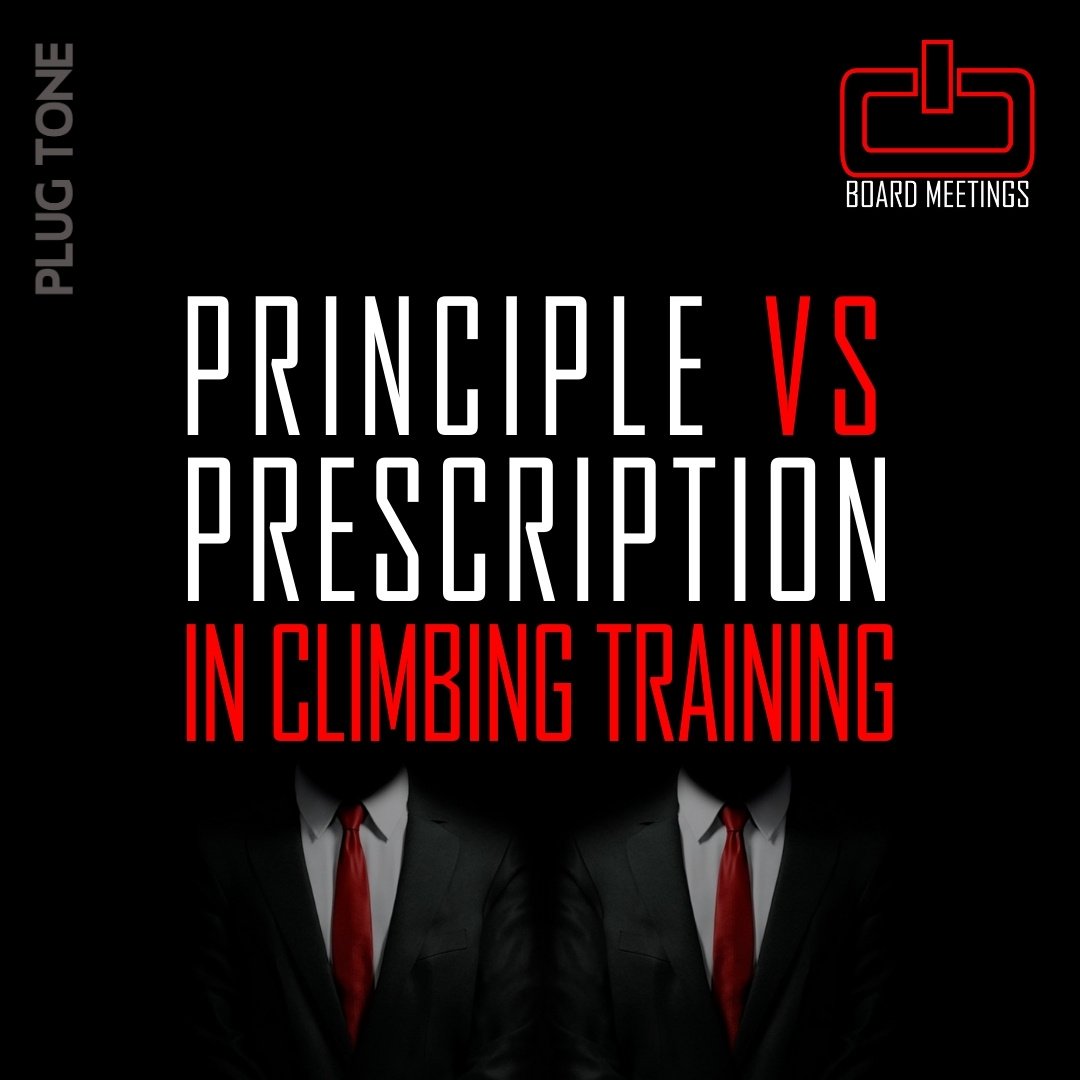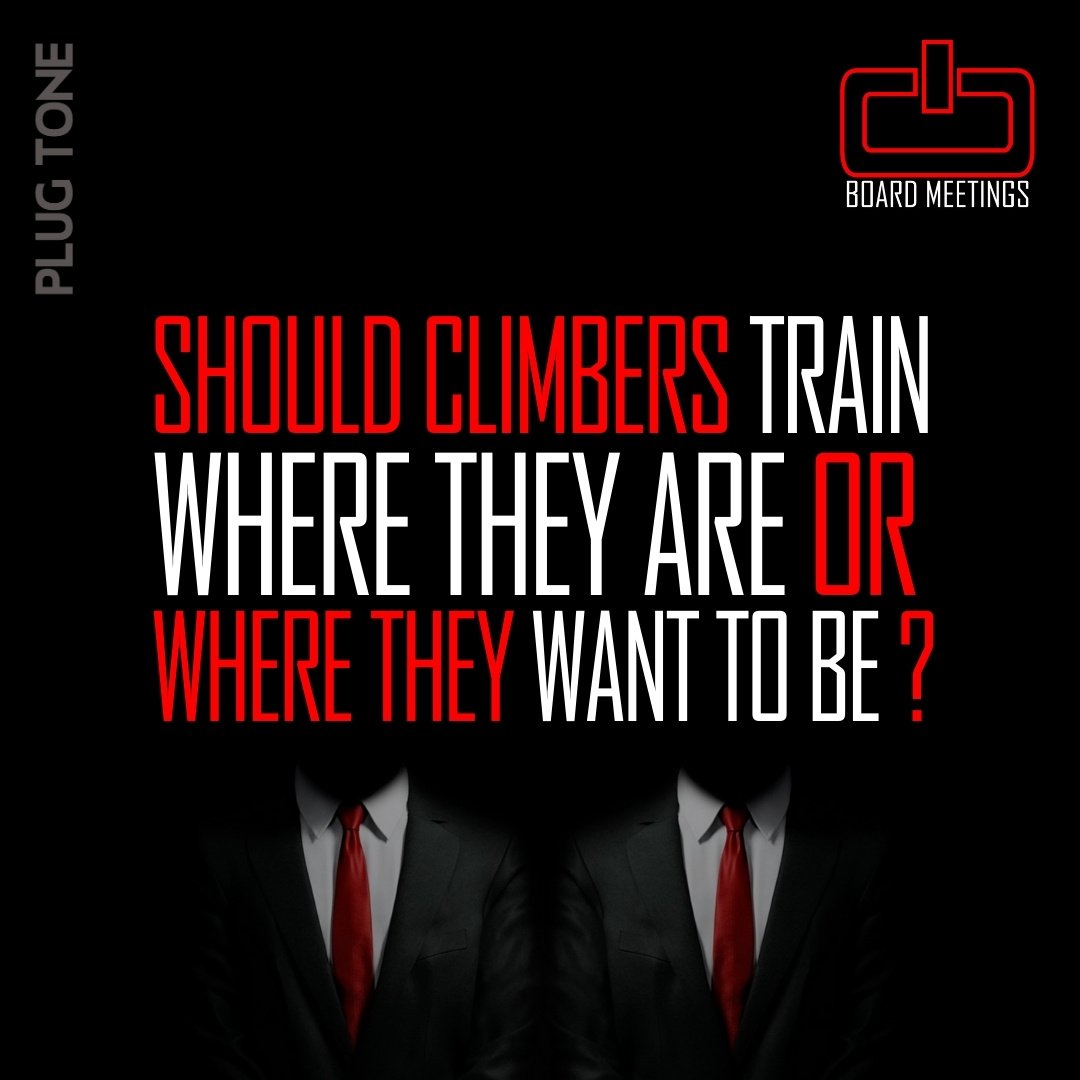How to Train Contact Strength | A Spectrum of Exercises
For every aspect of our climbing that we want to improve, there is a list of exercises we can choose from. These exercises exist on a spectrum that at one end is more measurable and isolates individual actions, but doesn’t transfer as directly to sport. On the other end are exercises that are less measurable, combine many complex interactions, and as a result are far more transferable to sport.
This video discusses and demonstrates many of the exercises in this spectrum that can be used to train contact strength - the rate of force development in the finger flexors.
Let’s take a look at the individual exercises - click on the button of any exercise’s name to go directly to that segment in the video.
Not to be confused with a ballistic or a velocity-based pull up. The Velocity No Hang uses a no hang device (like the Tension Block) attached to an immovable point. And all I'm going to do is get set up, nestled into the edge, and I'm going to quickly produce force. Hold that for just a few seconds, rest about 10 seconds, and repeat. And changing the difficulty of the edge size is going to put you in different spots on that force velocity curve.
On a hangboard, campusboard, etc. – engaging your shoulders – hanging from an edge being a little more specific than just pulling on an edge - again, we're back to that intent to move quickly. But rather than nestling your fingers in perfectly, and then slowly loading the hang, what we're going to do is get set up just above it and not really drop our weight onto it but latch it quickly.
We can trend a little more toward the requirements of our sport with a Grip Specific Velocity Hang. This simply gets a little more specific because it changes the orientation of the fingers. We don't only need contact strength for edges. And that's what we're getting on a hangboard or no hang device. We also need it for grabbing pinches, grabbing slopers - anything that we're going to be contacting really fast, we need to have the ability to create that force quickly. So I’ll choose a couple of pinches on my wall or board and do the exact same thing - with that same intent to move quickly. Hold for a few seconds with maximal force, rest, repeat. This way, you're starting to create tension through your entire shoulder girdle quickly in positions more like in rock climbing.
Many of us have seen the campus board jumping latch probably on Kyra Condie's Instagram account - she's a master at this. Now when we see Kyra do it, she's often doing it one arm jumping off the ground, latching one edge above her head - that's a little bit more advanced. I prefer to keep the lower hand on, for the tension it creates between my shoulders, the little bit of help with the timing, the transference of pulling hard from the low hand to latching with the high hand - all things that are going to be a little more specific and translate into your rock climbing a little better.
Same as with the hang, we can make this jump and latch a little more specific by using different grips, different shoulder positions, different directions for the hold, etc.. Anytime we're moving to the bouldering wall or moving into a space where we're using different holds, it's going to get tougher to measure: not only can we not necessarily measure the rate of force development, but we don't have progressive sizes of the exact same hold, to make changes and put us at different spots on that force velocity curve. Instead, we have to use our intuition a little bit. So as we're getting more specific, we're also getting a little less measurable. There's also a component of precision that happens with contact strength, especially as we apply it in climbing; oftentimes, you have to hit a hold just right; there could be a little hood guarding the hold that you can't get into. You need to be able to create tension to slow that down at the last moment, and then latch the hold as you're hitting it. We can practice that in this in this scenario as well.
The campus board - and campus laddering in general - have long been used as this catch-all for gaining power and contact strength. Using the campus board for contact strength has to be fairly specific - you have to be using holds that are somewhat difficult for you to use, and that you're not over-controlling. What I mean by this is: if I'm doing ladders on the medium rungs, even with no feet on, I can control them well enough that I can take the next rung really slowly - so I don't necessarily need to grab those rungs quickly. What we end up doing is making bigger and bigger moves, so that we're latching the rungs faster and faster, and that does work to a degree. However, going to a smaller rung and doing smaller moves is going to be safer - what that size rung is and size move is entirely depends on you and your abilities.
First up, the simple basic ladder. This is one where we definitely need to be moving to rungs that are tough for us to control: small rungs, small moves.
Next up, I really like having feet on for this exercise. Now, that's going to require that you move to an even smaller size rung in most cases if we're looking for contact strength, but it does make it more specific in that I'm learning to time and coordinate everything: my lower body and my upper body.
Most campus boards only go so small in the rung choices. And the smallest rungs for most companies are actually still a pretty good hold - especially when you have your feet on or if you're a really advanced climber. So our coach Nate Drolet talked with Will Anglin from Tension Climbing and together we developed the Power Strips, which are a small edge for campusing. They’ve got edges slightly smaller than the smallest campus rungs that you can get commercially. For these, I like to keep my feet on and just ladder between them, giving me a confidence to latch tiny little edges that we otherwise don't get on the campus board. And again, it's bringing in all of those elements of timing and coordination on these small edges.
One of my favorites is a foot-on 1-3-Max-Match. What we're doing here is a first move to the third rung or so, depending on your setup, and then an explosive move out of that, leaving your feet and latching a high rung. The rung should be pretty small. If you only have a campus board available, this is a really great way to get some skill transfer to your climbing.
Boulder campusing or campusing on climbing holds is certainly more specific than campusing on a campus board. However, it can very quickly turn into being more about power pulling than it is about contact strength. So in the context of contact strength, we want to make sure that we're doing smaller moves usually, to worse holds. Again, it depends where you want to be on this force velocity curve. What I suggest and find most useful is to make up campus boulders that are specific for context strength, rather than trying to just campus already existing boulders. It’s generally better to mix up the hold types, and to stay away from those flat edges that you can get on the campus board. Short sequences, hard moves, where you have to latch the holds quickly. It's definitely going to transfer to your climbing much better than the campus board will.
Indoor climbing is certainly the most specific thing you can do indoors to improve your contact strength outside, it gets all of the things involved: you're driving through your feet, you're creating tension in different positions with different size foothols, different size handholds, different grip types - there's nothing we can do indoors that's more specific to how contact strength is practiced outside. So as it stands, if you're getting in a lot of powerful indoor climbing, where you're having to latch holds quickly, as well as heavy hangs, you might be hitting a lot of the places on that force velocity curve already. And even though it's not super measurable on the bouldering wall, it's still going to transfer really well to your outdoor climbing.
And last but not least, the absolute best thing you can do for your contact strength is going to be climbing outside. Different rock types, different levels of friction, different size footholds, different areas, different conditions, it's all going to make a difference in how all of those complex interactions come together to form the moment when you latch that hold and hang on. So by all means, get out there. The most specific thing we can do for our climbing is to climb outside. So go do it.























Kris and Nate discuss their favorite protocols, both that they use themselves and in programming for their clients.